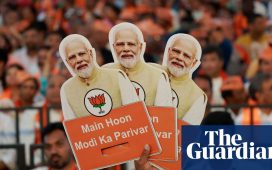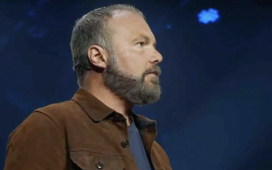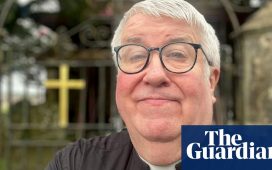The Messiah was born in February. Quinamayó’s ancestors, black people kidnapped from Africa, were not allowed to celebrate Christmas in December. That was an exclusive month for the owners of the haciendas. That is why the Quinamayó ancestors decided to celebrate their own festivities 45 days after the date dictated by the Catholic church, the same time that the Virgin Mary kept her diet once she gave birth.




-
Clockwise from top left: a woman raises the figure of the Black Baby Jesus; a baby in a wooden container before its presentation in festivities; Sheryl Nicole Gómez, nine, as the Virgin Mary; a rosary with religious symbols and a tabor and flute
It is an act of cultural and racial resistance that has been preserved for more than 170 years by the inhabitants of the town, located in the south of the department of Valle del Cauca. When the celebration arrives, the children play biblical characters from the New Testament, the matronas – female leaders – dress in their traditional costumes and almost the entire town dances the juga, a musical genre from Quinamayó.

-
Above: the most important Christmas procession in Quinamayó is known as the The Road to Bethlehem, led by two children who dress up as Mary and Joseph, while three young people play the role of godparents of the Black Baby Jesus. Right: a folkloric group dances around a bonfire formed by torches in the town’s main square



-
Above left: men dance to the Juga, a native rhythm that uses instruments such as the saxophone, tuba, clarinet, trumpet and drums. Above right: Heiber Fajardo enjoys the fireworks that close the Quinamayó festivities
Mirna Rodríguez, a matrona and singer, says: “They are children of the community who dress as angels, who give the ceremony before the arrival of God on Earth; as soldiers, who are the ones who guard his way; as Mary and Joseph; as the Star of Bethlehem, played by a girl who marks the path to follow, and the godfather and the two godmothers, who carry the basket where the Black Baby Jesus rests.”
In Quinamayó a pure syncretism is lived. The pride for its African roots is not in conflict with the Catholic fervour of some of its inhabitants. They worship religious figures with black faces, to feel identified.

-
Above: Daniela Hurtado practices the violin in the Sixto María Rojas school before starting her performance. Right: Melissa Mosquera, a representative of the Sixto María Rojas school, says: “I want to fight for my community, to preserve our racial and cultural identity.” Far right: Sarahy Andrea Peña is one of the godmothers of the Black Baby Jesus.


For Wilmer Izajar, a teacher of Cathedra Afro at the village school, “having black skin is not enough to recognise oneself as afro. You must go back to your history and customs.” Izajar says Quinamayó was born as a palenque, a Colombian expression to refer to communities descended from enslaved people who fled the haciendas.
“After leaving the Hacienda Japio, they went down the Quinamayó River. And that is why the name of this town, because of that river that helped them reach freedom,” recalls Wilmer Fernando Izajar, a teacher at the Sixto María Rojas Institution.



-
Top: Alicia Bermúdez Carabalí, 75, has been one of the main cultural leaders during Christmas in past years. “However, I am still a very fervent Catholic and respectful of my afro roots,” she says. Above left: Óscar Zamora, a member of Ecos del Tambor (Echoes of the drum), from the neighbouring community of Robles. Above right: Isabella Sandoval wears a costume made to commemorate Afro-Colombian Day.
What was once a symbol of repression is today reinterpreted as an act of resistance and freedom. This is the case of the juga, which is not only a musical genre played mostly by wind instruments, but also a dance performed with shuffling feet. It is a direct reference to how people with chains on their ankles had to walk, but the juga turns it into dance steps, which are performed at all kinds of parties.




“Maybe young people are losing a bit of that history and that’s why we don’t stop teaching it in school,” Izajar says. According to residents over 60 years old, Christmas parties are no longer as massive as they used to be, because now they depend entirely on public resources from the state, and there are years in which the festivities do not manage to take place, as happened in 2022 because of the third Covid peak.
In any case, Quinamayó continues to be a reference for the Afro-Colombian identity in the south of the country. In a town that seems frozen in time, with cobblestone streets and ranch-like houses, cultural and spiritual expressions do not die, even in the younger generations.




I believe this ongoing project, which I started in 2019, is important today, because Colombia is a racist country. We grew up under the idea of “improving the race”, as if people with African roots were a population that had to be fixed. And today, racism manifests itself in discriminatory comments in the street or on social networks. The inhabitants of Quinamayó fight against that by manifesting a syncretism that invites us to reflect on our racial and cultural diversity in Colombia.





